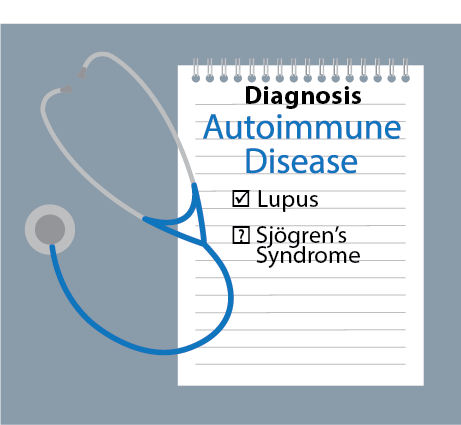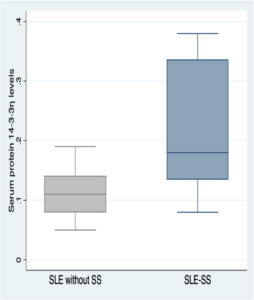Do you have a patient with Systemic Lupus Erythematosus (SLE) that you suspect may also have Sjögren’s Syndrome (SS)?
With shared clinical and serological features, overlapping SS with SLE is a comorbidity that is often challenging to identify to promptly assist clinical management. This may also lead to misdiagnoses of other connective tissue disorders.
New data on 14-3-3η (eta) enhances the detection rates of patients with secondary SS
- Serum 14-3-3η levels were found to be elevated in SLE patients with secondary SS compared to those with SLE without SS
- ROC analysis showed serum 14-3-3η levels as a predictor of SLE with secondary SS
- Levels of 14-3-3η significantly correlate with clinical and serological parameters (occular siccia, anti-LA and anti-Ro) in patients with secondary SS among SLE patients
Whether serum 14-3-3η levels are used alone in management of disease or in combination with other serological measurements, 14-3-3η clearly improves the diagnostic utility of patients with autoimmune conditions.
The 14-3-3η blood test is available in the U.S through Labcorp and RDL Reference Laboratory. In Canada, the test is available through Dynacare.
References
Hammam, N., Gamal, N.M., Elzohri, M.H. et al. Serum 14-3-3η protein is associated with clinical and serologic features of Sjögren’s syndrome in patients with systemic lupus erythematosus: a cross-sectional analysis. Clin Rheumatol (2020). https://doi.org/10.1007/s10067-020-05033-3


